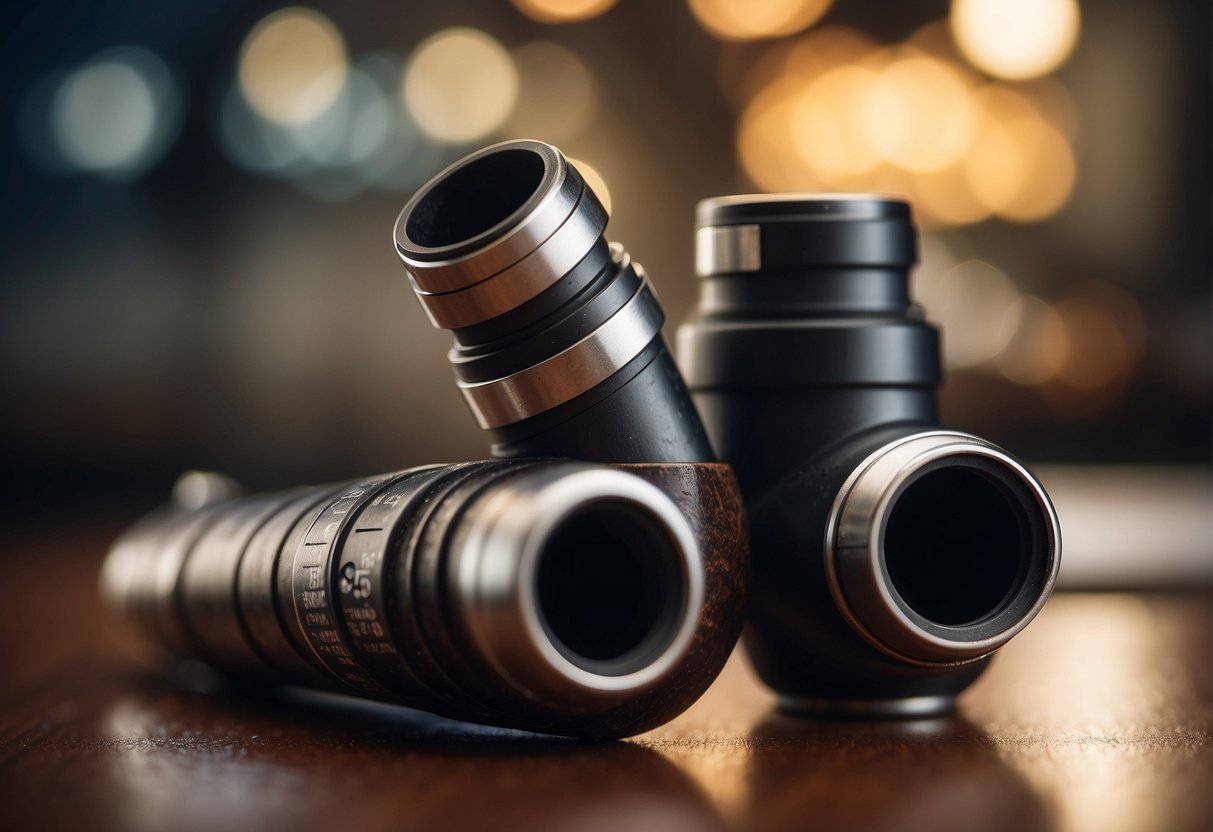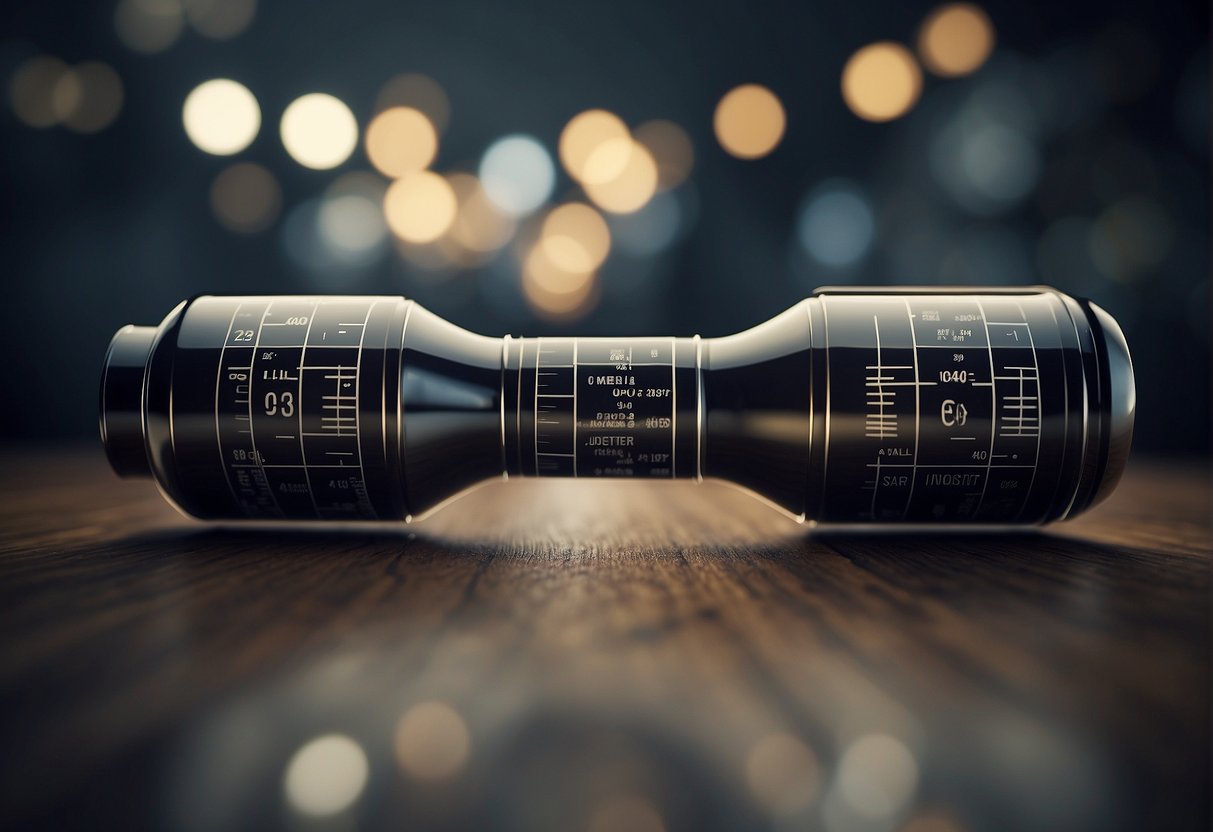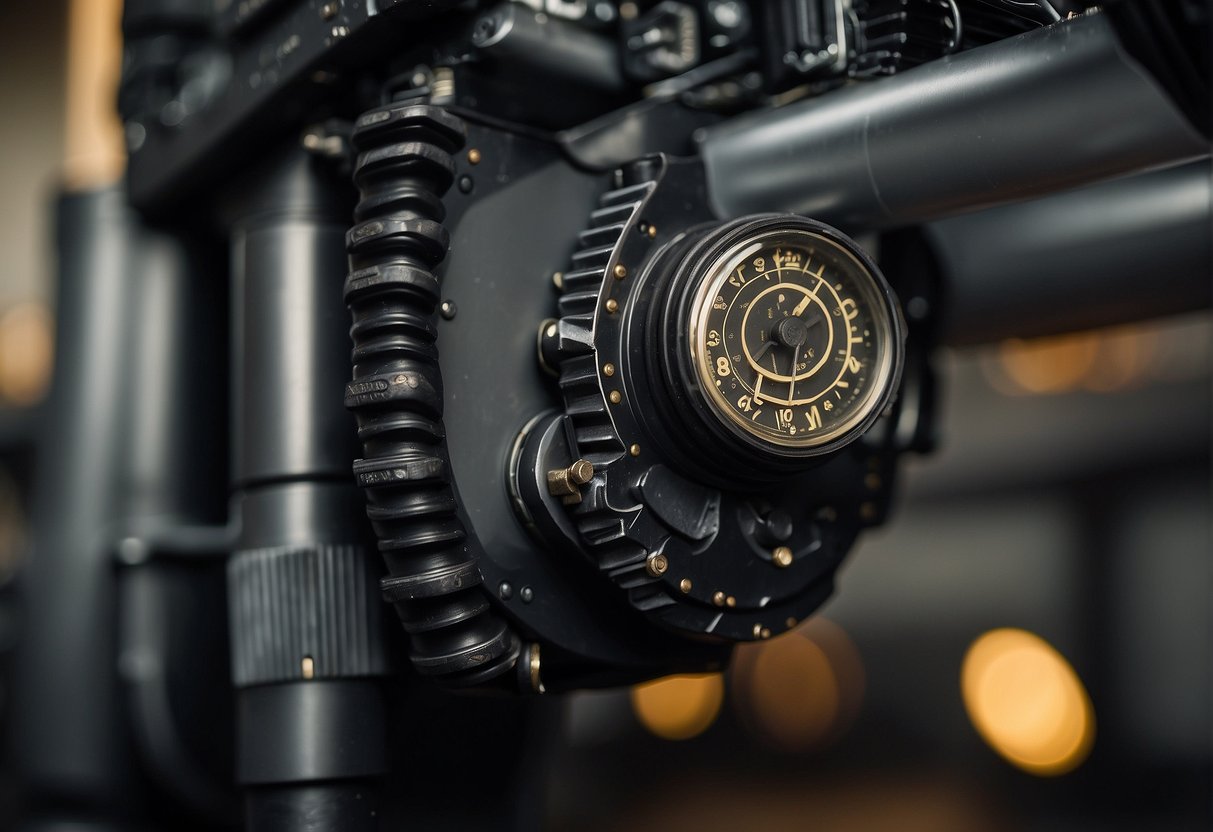When it comes to PVC pipes, two of the most commonly used types are SDR 35 and Schedule 40. While both have their own unique characteristics and applications, it’s important to understand the differences between the two to determine which one is the best fit for your project. In this article, I will compare and contrast SDR 35 and Schedule 40 PVC pipes, covering everything from physical properties to installation and maintenance considerations.
Understanding PVC Pipe Basics
PVC pipes are widely used in plumbing, irrigation, and other applications due to their durability, affordability, and versatility. SDR stands for “standard dimension ratio,” which is a measure of the pipe’s wall thickness compared to its outside diameter. Schedule 40, on the other hand, is a standard classification for PVC pipes based on their pressure rating. Both SDR 35 and Schedule 40 are made from the same material and have similar physical properties, but they differ in terms of wall thickness, diameter, and pressure rating.
Physical Properties Comparison
SDR 35 PVC pipes have a thicker wall than Schedule 40 PVC pipes, making them more suitable for underground sewer and drainage systems. Schedule 40 PVC pipes, on the other hand, are better suited for pressurized water systems due to their thinner wall and higher pressure rating. SDR 35 pipes are also smaller in diameter than Schedule 40 pipes, which can affect their flow rate and capacity. When it comes to flexibility, SDR 35 pipes are more flexible than Schedule 40 pipes, which can make them easier to install in tight spaces.
Understanding PVC Pipe Basics
As a homeowner, you may have come across PVC pipes while working on your plumbing system. PVC stands for polyvinyl chloride, a thermoplastic material used to make various products, including pipes. PVC pipes are lightweight, easy to install, and durable, making them a popular choice for many homeowners.
PVC Pipe Composition
PVC pipes are made of a combination of vinyl chloride and other additives. The composition of PVC pipes can vary depending on the intended use. For example, pipes used for water supply are made with different additives than those used for drainage.
Standard Dimension Ratio (SDR) Explained
SDR stands for Standard Dimension Ratio, which is a method of rating pipes based on their wall thickness and diameter. SDR is used to classify pipes based on their intended use and pressure rating. SDR 35 and Schedule 40 are two common types of PVC pipes used in residential plumbing.
Schedule 40 PVC Characteristics
Schedule 40 PVC pipes are designed for pressurized water systems. They have a thicker wall than SDR 35 pipes, making them more durable and resistant to damage from impact. Schedule 40 pipes are also more rigid, making them suitable for straight runs.
In summary, PVC pipes are a popular choice for residential plumbing due to their durability, lightweight, and ease of installation. The two most common types of PVC pipes used in residential plumbing are SDR 35 and Schedule 40. Understanding the differences between these two types of pipes can help you make an informed decision when choosing the right pipe for your plumbing needs.
Physical Properties Comparison
When it comes to comparing SDR 35 and Schedule 40 pipes, it is essential to consider their physical properties. Here’s a closer look at some of the key differences between the two:
Thickness and Durability
SDR 35 pipes have a thicker wall than Schedule 40 pipes, making them more durable and able to withstand external forces. However, Schedule 40 pipes offer higher material strength, making them more suitable for high-pressure applications.
Flexibility and Strength
SDR 35 pipes are more flexible than Schedule 40 pipes, making them easier to install and ideal for low-pressure applications. However, Schedule 40 pipes are designed for high-pressure applications and offer greater strength.
Temperature and UV Resistance
Both SDR 35 and Schedule 40 pipes exhibit excellent chemical resistance, making them reliable choices for handling sewage and various chemicals. However, Schedule 40 pipes are more resistant to temperature changes and UV radiation.
In summary, when choosing between SDR 35 and Schedule 40 pipes, it’s important to consider the specific needs of your project. While SDR 35 pipes are better suited for low-pressure applications, Schedule 40 pipes are designed for high-pressure applications and offer greater strength. Additionally, Schedule 40 pipes are more resistant to temperature changes and UV radiation, making them a better choice for outdoor installations.
Applications and Suitability
When it comes to choosing between SDR 35 and Schedule 40 pipes, it’s important to understand their applications and suitability. Both types of pipes are made from PVC, but they have different characteristics that make them suitable for different applications.
Drainage and Irrigation Systems
SDR 35 pipes are commonly used for underground drainage and irrigation systems. They are designed to handle non-pressure water flow and have a thinner wall compared to Schedule 40 pipes. This makes them more flexible and easier to install in curved or angled configurations. SDR 35 pipes are also less expensive than Schedule 40 pipes, making them a popular choice for drainage and irrigation systems.
On the other hand, Schedule 40 pipes are better suited for pressurized water systems. They have a thicker wall and are stiffer, making them more resistant to damage and better suited for straight runs. Schedule 40 pipes are also more expensive than SDR 35 pipes, but they are more durable and can withstand higher pressure.
Plumbing and Wastewater Management
For plumbing and wastewater management applications, Schedule 40 pipes are the preferred choice. They are designed to handle high-pressure water flow and are more durable than SDR 35 pipes. Schedule 40 pipes are also resistant to chemicals and abrasion, making them ideal for use in harsh environments.
SDR 35 pipes, on the other hand, are better suited for low-pressure applications such as sewer and drainage systems. They are not recommended for use in pressurized water systems as they are not designed to handle high-pressure water flow.
Outdoor and Underground Installations
Both SDR 35 and Schedule 40 pipes are suitable for outdoor and underground installations. However, SDR 35 pipes are more flexible and easier to install in tight spaces or curved configurations. They are also less expensive than Schedule 40 pipes, making them a popular choice for outdoor and underground installations.
Schedule 40 pipes, on the other hand, are more durable and can withstand harsh environments. They are also better suited for straight runs and are less likely to deflect under pressure. However, they are more expensive than SDR 35 pipes and may not be the best choice for tight spaces or curved configurations.
In summary, the choice between SDR 35 and Schedule 40 pipes depends on the specific application. SDR 35 pipes are more flexible and less expensive, making them a good choice for drainage and irrigation systems. Schedule 40 pipes are more durable and better suited for pressurized water systems and plumbing applications.
Installation and Maintenance
When it comes to installation and maintenance, both SDR 35 and Schedule 40 PVC pipes require similar techniques. However, there are a few differences to keep in mind.
Joining Techniques and Fittings
One of the main differences between SDR 35 and Schedule 40 PVC pipes is the type of joints and fittings used. SDR 35 pipes typically use gasketed joints, while Schedule 40 pipes use solvent weld joints. This means that SDR 35 pipes are easier to install and require less specialized equipment. However, solvent weld joints provide a stronger and more durable connection, making them ideal for high-pressure applications.
In terms of fittings, both types of pipes use the same fittings, including elbows, tees, and couplings. However, it’s important to ensure that the fittings used are designed for the specific type of pipe being used.
Dealing with Environmental Stress
Both SDR 35 and Schedule 40 PVC pipes are susceptible to environmental stress, which can cause shifting, frost heaves, and cracking. In cold weather, both types of pipes can become brittle and more prone to cracking. Additionally, roots can penetrate both types of pipes, causing blockages and other issues.
To prevent these issues, it’s important to properly install the pipes and ensure that they are buried at the correct depth. Additionally, it’s important to regularly inspect the pipes for any signs of damage or blockages.
Long-Term Maintenance
Both SDR 35 and Schedule 40 PVC pipes require minimal long-term maintenance. However, it’s important to regularly inspect the pipes for any signs of damage or blockages. If any issues are found, they should be addressed immediately to prevent further damage.
Overall, both SDR 35 and Schedule 40 PVC pipes are durable and reliable options for a variety of applications. However, it’s important to choose the right type of pipe for your specific needs and to properly install and maintain the pipes to ensure their longevity.
Cost and Longevity Considerations
When it comes to choosing between SDR 35 and Schedule 40 pipes, there are several factors to consider. One of the most important factors is cost and longevity. In this section, I will discuss the initial cost and availability of each type of pipe, as well as their lifespan and cost-effectiveness. Finally, I will provide some tips on choosing the right pipe for long-term purposes.
Initial Cost and Availability
In terms of initial cost, SDR 35 pipes are generally less expensive than Schedule 40 pipes. This is because SDR 35 pipes are made from thinner walls and are not designed to withstand as much pressure as Schedule 40 pipes. However, it is important to note that the cost of the pipe is only one aspect of the overall cost of the project. Other factors, such as installation, maintenance, and repair costs, should also be taken into consideration.
In terms of availability, both SDR 35 and Schedule 40 pipes are widely available. However, depending on your location and the size of the pipe you need, one type of pipe may be more readily available than the other.
Lifespan and Cost-Effectiveness
While SDR 35 pipes are less expensive initially, Schedule 40 pipes may be more cost-effective in the long run due to their longer lifespan. Schedule 40 pipes are made from thicker walls and are designed to withstand higher pressure, which means they are less likely to crack or break over time. This means that they may require less maintenance and repair over their lifespan, which can ultimately save you money in the long run.
Choosing the Right Pipe for Long-Term Purposes
When choosing between SDR 35 and Schedule 40 pipes, it is important to consider your long-term goals for the project. If you are looking for a more cost-effective option in the short term, SDR 35 pipes may be the way to go. However, if you are looking for a pipe that will last for many years and require less maintenance and repair, Schedule 40 pipes may be the better choice.
Ultimately, the decision between SDR 35 and Schedule 40 pipes will depend on a variety of factors, including your budget, the specific needs of your project, and your long-term goals. By considering these factors carefully and weighing the benefits and disadvantages of each type of pipe, you can choose the right pipe for your needs and ensure that your project is a success.
Frequently Asked Questions
What are the differences in strength between SDR 35 and Schedule 40 pipes?
SDR 35 pipes are generally less strong than Schedule 40 pipes, but they are still strong enough to handle most residential drainage applications. Schedule 40 pipes are designed to handle higher pressures and are used in applications where high fluid pressure is expected.
What are the typical applications for SDR 35 pipes?
SDR 35 pipes are commonly used for underground sewer and drainage systems. They are also used for stormwater management, septic systems, and other low-pressure applications.
Are Schedule 40 fittings compatible with SDR 35 pipes?
No, Schedule 40 fittings are not compatible with SDR 35 pipes. SDR 35 pipes have a different outside diameter than Schedule 40 pipes, so they require different fittings. It’s important to use the correct fittings for your specific type of pipe to ensure proper installation and prevent leaks.
Is it safe to drive over SDR 35 piping?
SDR 35 pipes are not designed to support heavy loads, so it’s not recommended to drive over them. If you need to install piping that will be subject to heavy loads, Schedule 40 pipes may be a better choice.
How do the costs of SDR 35 compare to Schedule 40 pipes?
SDR 35 pipes are generally less expensive than Schedule 40 pipes. However, the cost difference can vary depending on the size and length of the pipe, as well as the specific application.
What are the dimension differences between SDR 35 and Schedule 40 pipes?
SDR 35 pipes have a thinner wall than Schedule 40 pipes, which means they have a larger inside diameter for the same outside diameter. This can affect the flow rate of the pipe and may require adjustments to the system design. It’s important to consult with a professional to determine the correct pipe size and type for your specific application.

Hi, I’m Sal Muller of Tooltrip.com. My DIY experience led me to understand essential power tools for home projects. Tooltrip.com guides enthusiasts and professionals in choosing right tools for any job. I provide concise top tool reviews for easier, efficient DIY.




